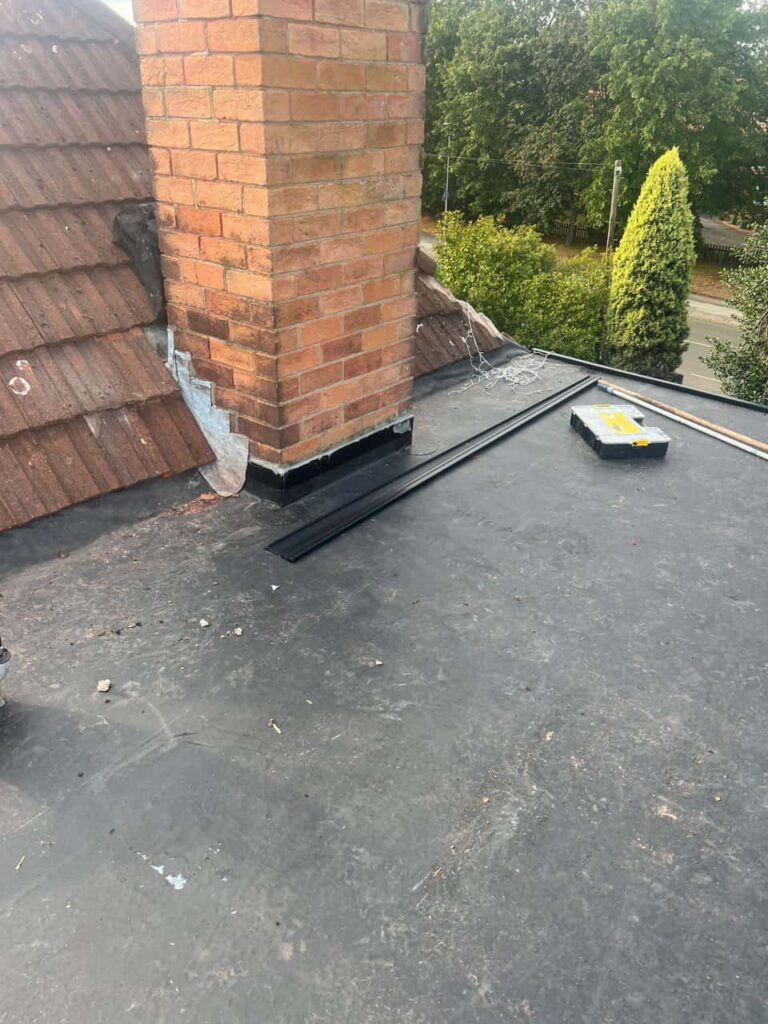Introduction: Natural light can transform a space, making it appear larger, more welcoming, and more energy-efficient. For buildings with flat roofs, incorporating skylights or roof windows is an excellent way to enhance interior light, improve ventilation, and add aesthetic value. This blog post explores the benefits of integrating skylights and roof windows into flat roof designs, offering practical tips and considerations for property owners considering this upgrade.
Benefits of Skylights and Roof Windows
- Enhanced Natural Light: Skylights and roof windows significantly increase the amount of natural light in a building, reducing the need for artificial lighting and lowering energy costs. This light can make spaces feel more inviting and comfortable.
- Improved Ventilation: Many skylight models offer venting options that help reduce the buildup of stale air and improve air quality inside the building. This is particularly beneficial in areas like kitchens and bathrooms, where ventilation is crucial.
- Energy Efficiency: Modern skylights and roof windows are designed with energy efficiency in mind. High-quality glazing, weather seals, and other features minimise heat loss during winter and reduce heat gain during summer.
- Space Saving: Unlike vertical windows, skylights and roof windows do not require wall space, making them ideal for rooms where wall space is limited or already used for other purposes.
- Aesthetic Appeal: Skylights can be a striking architectural feature, adding uniqueness to a building’s design. They provide a view of the sky and can make indoor environments more pleasant and visually appealing.
Considerations for Installing Skylights and Roof Windows on Flat Roofs
- Waterproofing: The primary challenge with installing skylights on flat roofs is ensuring they are waterproof. Proper installation involves building curbs around the skylights to raise them above the roof surface level, ensuring water does not pool around the frames.
- Glazing Options: Choosing the right type of glazing is crucial for controlling heat gain and loss. Double or triple-glazed units filled with inert gas provide excellent insulation, while tinted or UV-reflective glass can help control solar gain and protect interiors from harmful UV rays.
- Placement and Size: The placement of skylights should maximise natural light while minimising unwanted heat gain and glare. Consider the sun’s path and the interior layout when deciding on the placement and size of skylights.
- Access and Safety: Ensure that skylights are accessible for cleaning and maintenance, and consider safety features, especially if the roof is accessible. Options like laminated glass can prevent breakage, adding an extra layer of safety.
- Building Regulations: Check local building codes and regulations regarding installing skylights and roof windows. This includes considerations for energy efficiency, fire safety, and structural integrity.
Incorporation Tips
- Integrate with Interior Design: Position skylights to enhance the room’s functionality. For example, place them above work areas in kitchens or reading areas in living rooms to make the most of the natural light.
- Use Them to Enhance Small Spaces: Install skylights in small or confined areas like hallways or bathrooms where conventional windows cannot open the space.
- Combine with Light-Reflective Surfaces: Use mirrors and other reflective surfaces inside the room to further distribute light entering through skylights and roof windows.
Conclusion: Incorporating skylights and roof windows into flat roof designs enhances the aesthetic and functional qualities and contributes to its energy efficiency and comfort. When properly installed and utilised, these features transform an ordinary room into a bright, airy, inviting space.
Introduction: Natural light can transform a space, making it appear larger, more welcoming, and more energy-efficient. For buildings with flat roofs, incorporating skylights or roof windows is an excellent way to enhance interior light, improve ventilation, and add aesthetic value. This blog post explores the benefits of integrating skylights and roof windows into flat roof designs, offering practical tips and considerations for property owners considering this upgrade.
Benefits of Skylights and Roof Windows
- Enhanced Natural Light: Skylights and roof windows significantly increase the amount of natural light in a building, reducing the need for artificial lighting and lowering energy costs. This light can make spaces feel more inviting and comfortable.
- Improved Ventilation: Many skylight models offer venting options that help reduce the buildup of stale air and improve air quality inside the building. This is particularly beneficial in areas like kitchens and bathrooms, where ventilation is crucial.
- Energy Efficiency: Modern skylights and roof windows are designed with energy efficiency in mind. High-quality glazing, weather seals, and other features minimise heat loss during winter and reduce heat gain during summer.
- Space Saving: Unlike vertical windows, skylights and roof windows do not require wall space, making them ideal for rooms where wall space is limited or already used for other purposes.
- Aesthetic Appeal: Skylights can be a striking architectural feature, adding uniqueness to a building’s design. They provide a view of the sky and can make indoor environments more pleasant and visually appealing.
Considerations for Installing Skylights and Roof Windows on Flat Roofs
- Waterproofing: The primary challenge with installing skylights on flat roofs is ensuring they are waterproof. Proper installation involves building curbs around the skylights to raise them above the roof surface level, ensuring water does not pool around the frames.
- Glazing Options: Choosing the right type of glazing is crucial for controlling heat gain and loss. Double or triple-glazed units filled with inert gas provide excellent insulation, while tinted or UV-reflective glass can help control solar gain and protect interiors from harmful UV rays.
- Placement and Size: The placement of skylights should maximise natural light while minimising unwanted heat gain and glare. Consider the sun’s path and the interior layout when deciding on the placement and size of skylights.
- Access and Safety: Ensure that skylights are accessible for cleaning and maintenance, and consider safety features, especially if the roof is accessible. Options like laminated glass can prevent breakage, adding an extra layer of safety.
- Building Regulations: Check local building codes and regulations regarding installing skylights and roof windows. This includes considerations for energy efficiency, fire safety, and structural integrity.
Incorporation Tips
- Integrate with Interior Design: Position skylights to enhance the room’s functionality. For example, place them above work areas in kitchens or reading areas in living rooms to make the most of the natural light.
- Use Them to Enhance Small Spaces: Install skylights in small or confined areas like hallways or bathrooms where conventional windows cannot open the space.
- Combine with Light-Reflective Surfaces: Use mirrors and other reflective surfaces inside the room to further distribute light entering through skylights and roof windows.
Conclusion: Incorporating skylights and roof windows into flat roof designs enhances the aesthetic and functional qualities and contributes to its energy efficiency and comfort. When properly installed and utilised, these features transform an ordinary room into a bright, airy, inviting space.
Call us on: 024 7542 2296
Click here to find out more about Bedworth Roofing Repairs
Click here to complete our contact form and see how we can help with your roofing needs.

